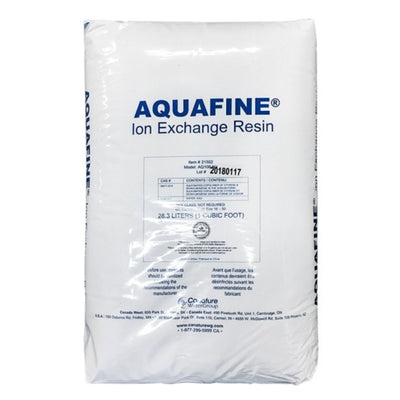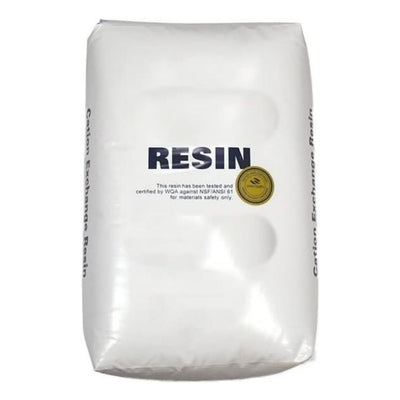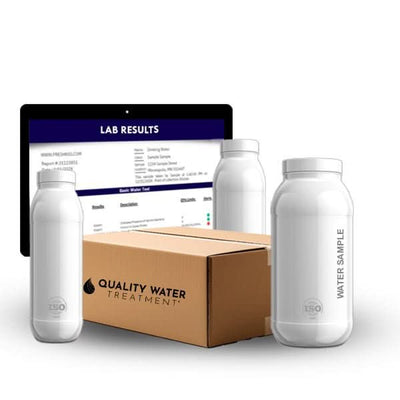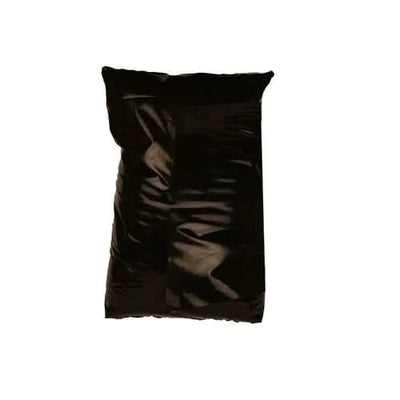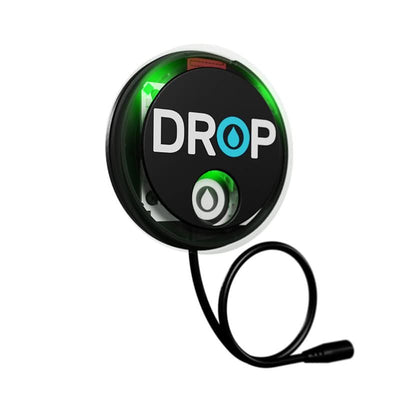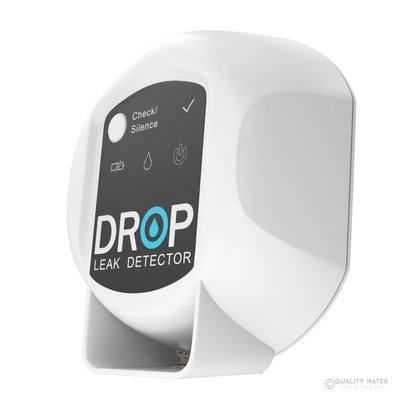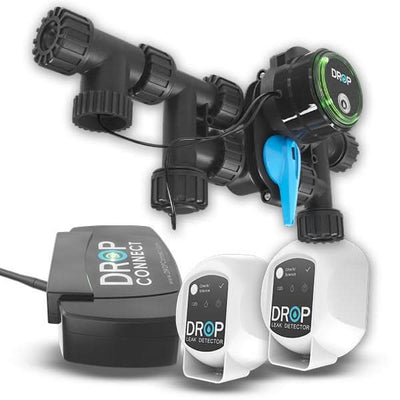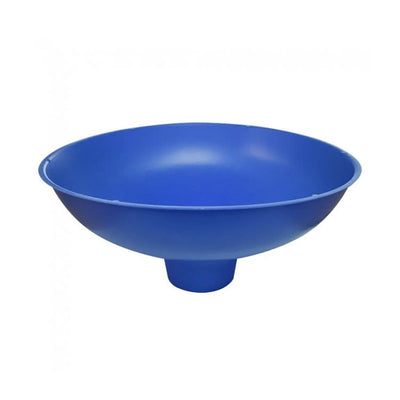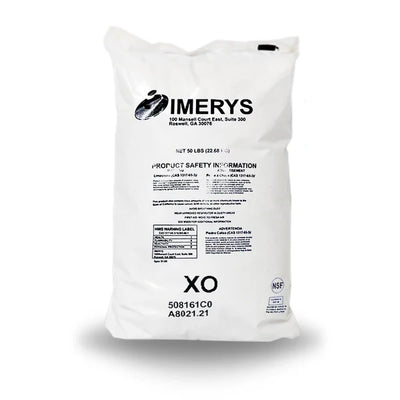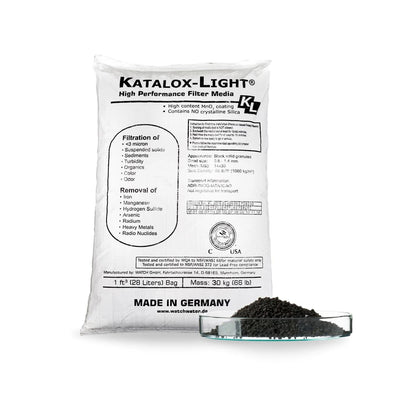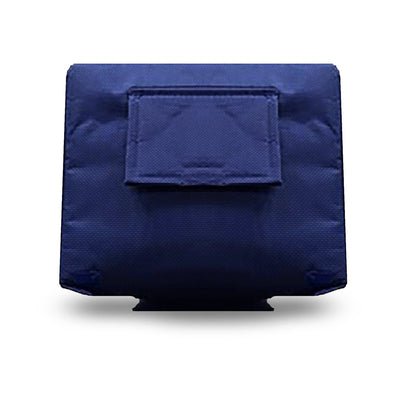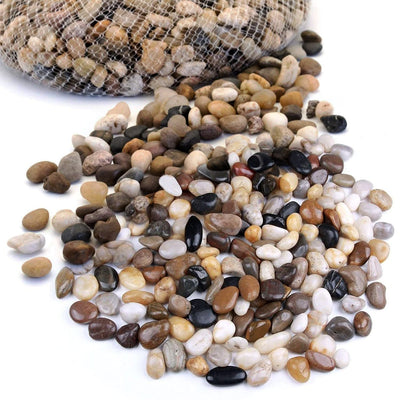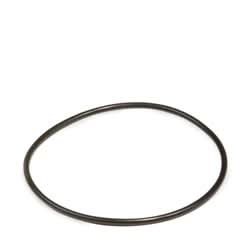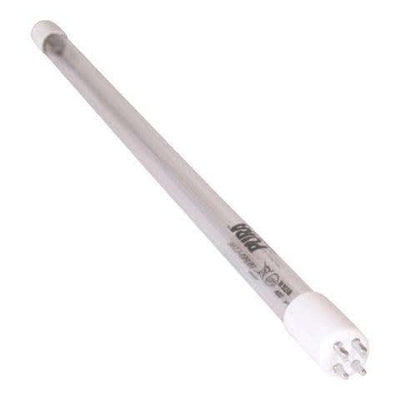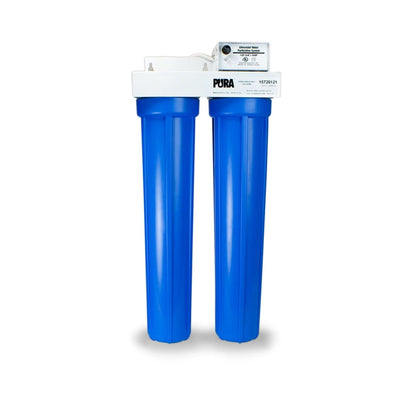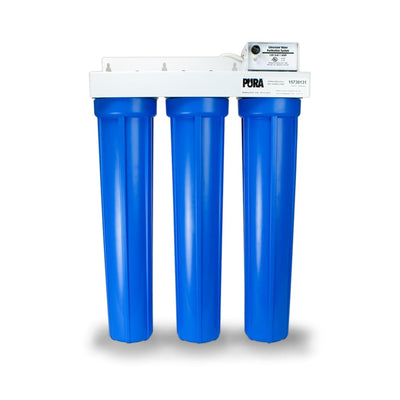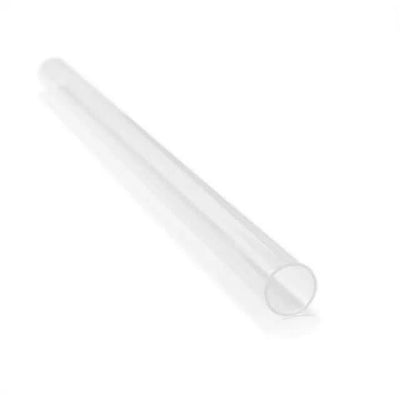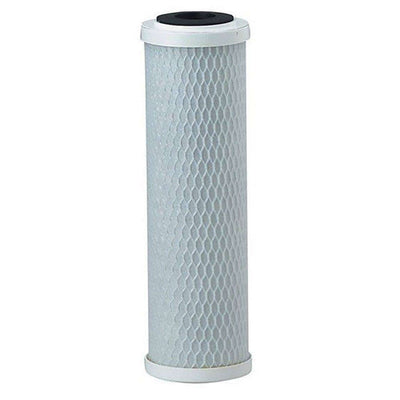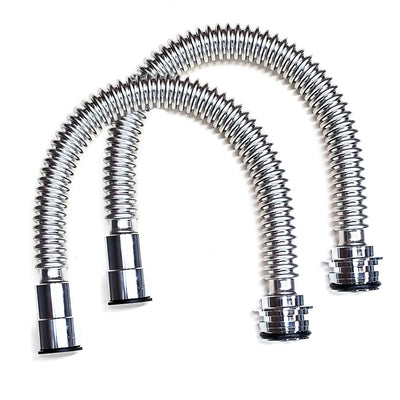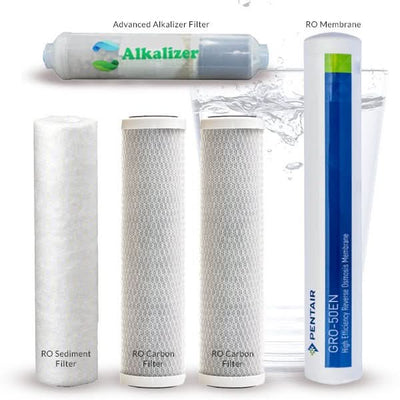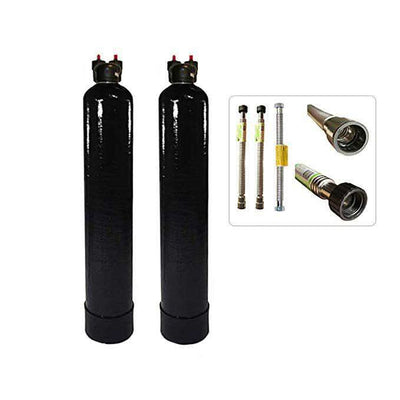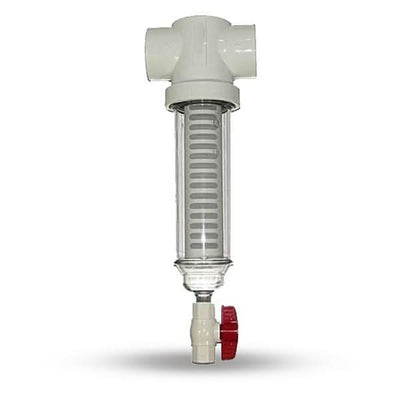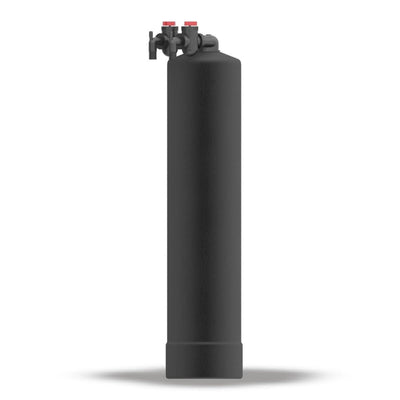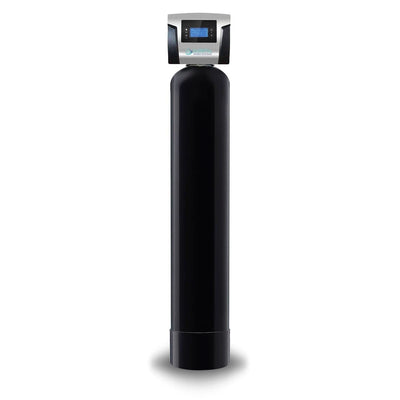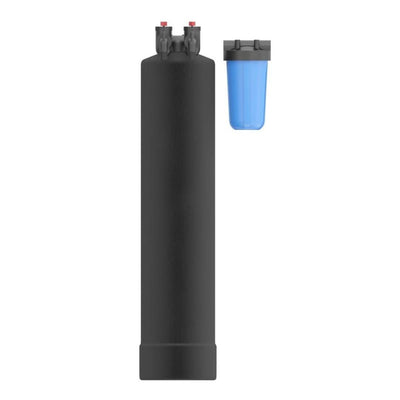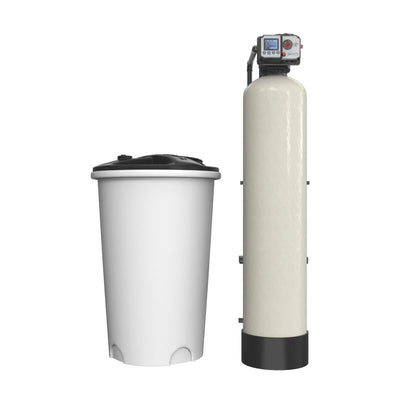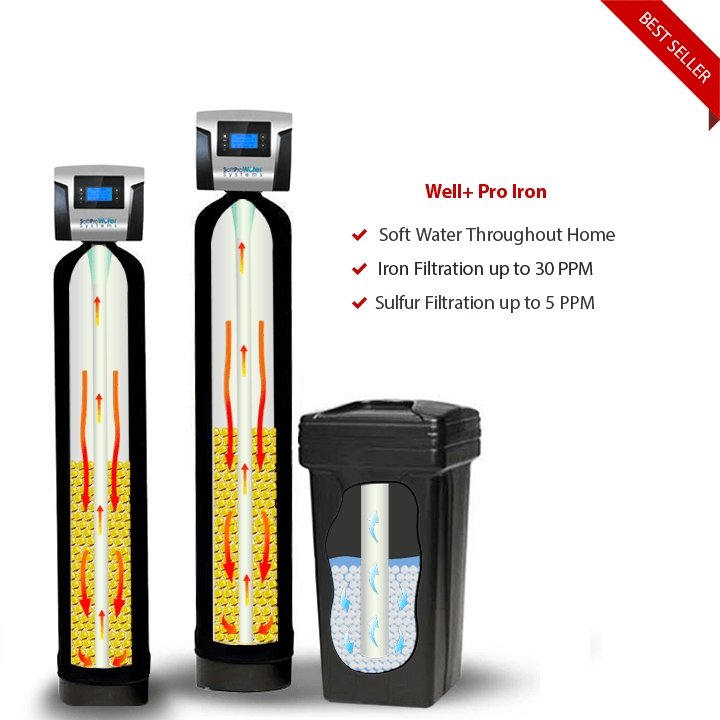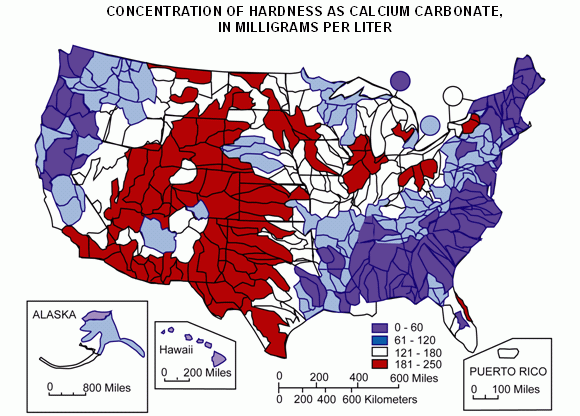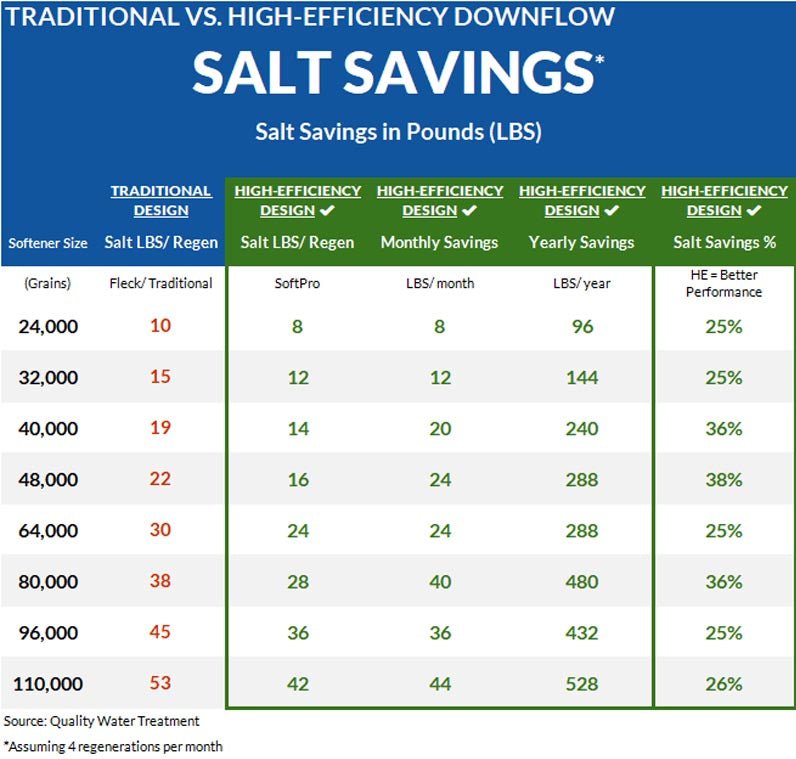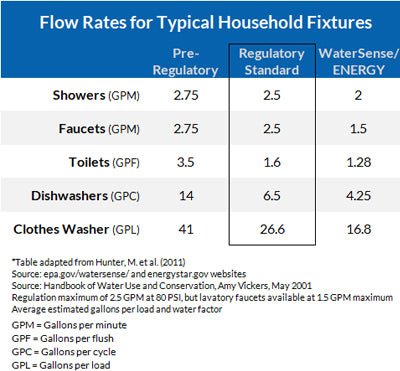SoftPro Carbon Filter - Catalytic Carbon Electronic 1" Auto Backwash (Lifetime Warranty)
SoftPro Catalytic Backwashing Activated Carbon Filter
- Improves water for the whole house
- Removes Chloramines, Chlorine, VOC's and other chemicals
- Chemical-Free Operation
- Removes taste and odors that water softeners can't
- Ideal for reduction of chlorine
- Backwashes without chemicals or salt
- High Flow Rate
System includes:
- Filter tank
- Activated catalytic carbon media
Upkeep:
Depending on the water quality and usage, this catalytic carbon filter may last an amazing 7 to 10 years before needing to easily replace the media. This catalytic carbon media is technologically engineered so it won't have to be replaced as often as traditional carbons that typically last only 3 to 5 years.
How it functions:
The granulated activated carbon removes particular chemicals dissolved in water that passes via the GAC filter by trapping the chemical in the GAC.
Note: The system removes sediment and oxidized iron particles, which might trigger some spotting, however the minerals remain exactly the same. If scaling or spotting is an issue, a water softener is needed.
Catalytic Carbon Water Filter for Well Water
Access to clean and safe water is essential for every household, especially for those relying on well water. Well water often contains impurities that can affect its taste, smell, and safety. A catalytic carbon water filter is an advanced filtration solution designed to address these challenges effectively. In this article, we’ll explore everything you need to know about catalytic carbon filters and why they are an excellent choice for treating well water.
What is a Catalytic Carbon Water Filter?
A catalytic carbon water filter is a specialized filtration system that uses catalytic carbon, a highly activated form of carbon, to remove impurities from water.
Unlike standard activated carbon filters, catalytic carbon has enhanced properties that allow it to break down and remove stubborn contaminants like hydrogen sulfide, chloramines, and volatile organic compounds (VOCs). This makes it particularly effective for treating well water, which often contains a mix of chemical and organic pollutants.
Why is Water Filtration Important for Well Water?
Well water may seem like a pure and natural source, but it often contains contaminants such as iron, manganese, hydrogen sulfide, pesticides, bacteria, and heavy metals.
These impurities can cause unpleasant odors, discoloration, and health risks if left untreated. Filtration ensures that your well water is safe to drink and use while improving its taste and quality.
How Does Catalytic Carbon Differ from Activated Carbon?
Catalytic carbon is a modified form of activated carbon with enhanced catalytic properties. While both types of carbon excel at adsorption—trapping impurities on their surface—catalytic carbon goes a step further by chemically breaking down certain contaminants.
For example, it can convert harmful chloramines into harmless chloride ions or oxidize hydrogen sulfide into sulfur particles that can be filtered out. This dual function of adsorption and catalysis makes it more versatile than standard activated carbon.
The Science Behind Catalytic Carbon: Adsorption & Catalysis
Catalytic carbon works through two main processes: adsorption and catalysis. Adsorption involves trapping impurities on the porous surface of the carbon material.
Catalysis, on the other hand, involves chemical reactions that transform contaminants into less harmful substances. The microscopic structure of catalytic carbon provides a large surface area for these reactions to occur efficiently.
How Catalytic Carbon is Made: Surface Modification & Activation
The production of catalytic carbon involves modifying the surface of activated carbon through chemical or thermal processes. These modifications enhance its catalytic properties by increasing its ability to interact with specific contaminants. The result is a highly efficient filtration material capable of addressing a wide range of impurities.
Benefits of Using Catalytic Whole House Carbon Filters for Well Water
1. Removal of Contaminants
Catalytic carbon filters are highly effective at removing chlorine, chloramines, hydrogen sulfide, VOCs, pesticides, herbicides, and other organic pollutants commonly found in well water.
2. Eliminating Odors & Tastes
Hydrogen sulfide in well water often causes a rotten egg smell. Catalytic carbon filters neutralize this odor while improving the overall taste of your water.
3. Reducing Harmful Chemicals
By breaking down disinfection byproducts like trihalomethanes (THMs), catalytic carbon ensures that your water is safer to consume.
4. Addressing Iron & Manganese
Catalytic carbon can also help reduce iron and manganese levels in well water when used in conjunction with pre-treatment systems.
5. Eco-Friendly Solution
Unlike chemical treatments, catalytic carbon filtration is an environmentally friendly process that doesn’t rely on harsh chemicals or additives.
Key Contaminants Addressed by Catalytic Carbon Filters
Hydrogen Sulfide
Hydrogen sulfide is responsible for the unpleasant rotten egg smell in well water. Catalytic carbon oxidizes this compound into harmless sulfur particles that can be removed during filtration.
Chloramines
Chloramines are disinfectants used in municipal water systems but can sometimes contaminate well water through runoff or nearby treatment facilities. Catalytic carbon effectively neutralizes chloramines to improve water quality.
Volatile Organic Compounds (VOCs)
Pesticides, herbicides, and industrial chemicals can leach into groundwater supplies. Catalytic carbon traps these harmful compounds to ensure safer drinking water.
Applications of Catalytic Carbon Filters
Residential Use
Catalytic carbon filters are commonly installed as whole-house systems or point-of-use filters to provide clean water for drinking, cooking, bathing, and laundry.
Commercial & Industrial Applications
These filters are also used in commercial settings such as restaurants or manufacturing plants where high-quality water is essential.
Municipal Water Treatment
Some municipalities use catalytic carbon filters to address emerging contaminants like PFAS (per- and polyfluoroalkyl substances) in public water supplies.
Comparing Catalytic Carbon to Other Filtration Methods
Catalytic Carbon vs. Standard Activated Carbon Filters
While both types of filters remove impurities through adsorption, catalytic carbon offers additional benefits like breaking down chloramines and hydrogen sulfide through catalysis.
Catalytic Carbon vs. Reverse Osmosis Systems
Reverse osmosis removes nearly all dissolved solids but wastes significant amounts of water during the process. Catalytic carbon focuses on specific contaminants without excessive water waste.
Installation & Maintenance of Catalytic Carbon Filters
How to Install a Catalytic Carbon Filter
Installing a catalytic carbon filter typically involves connecting it to your home’s main water line or placing it under your sink for point-of-use filtration.
Maintenance Tips
Regular maintenance includes backwashing the filter to remove trapped particles and replacing the media every few years to maintain efficiency.
Choosing the Right Catalytic Carbon Filter for Your Needs
When selecting a filter, consider factors like your well’s contaminant levels, flow rate requirements, and household size. Some systems are designed specifically for high sulfur or iron content in well water.
Limitations of Catalytic Carbon Filters
While highly effective at removing many contaminants, catalytic carbon filters cannot address hardness minerals like calcium or magnesium. For these issues, pairing the filter with a water softener may be necessary.
SoftPro Carbon Filter - Catalytic Carbon Electronic 1" Auto Backwash (Lifetime Warranty)
--------------------
| Shipping | This item ships to |
Description
SoftPro Carbon Filter - Catalytic Carbon Electronic 1" Auto Backwash (Lifetime Warranty)
SoftPro Catalytic Backwashing Activated Carbon Filter
- Improves water for the whole house
- Removes Chloramines, Chlorine, VOC's and other chemicals
- Chemical-Free Operation
- Removes taste and odors that water softeners can't
- Ideal for reduction of chlorine
- Backwashes without chemicals or salt
- High Flow Rate
System includes:
- Filter tank
- Activated catalytic carbon media
Upkeep:
Depending on the water quality and usage, this catalytic carbon filter may last an amazing 7 to 10 years before needing to easily replace the media. This catalytic carbon media is technologically engineered so it won't have to be replaced as often as traditional carbons that typically last only 3 to 5 years.
How it functions:
The granulated activated carbon removes particular chemicals dissolved in water that passes via the GAC filter by trapping the chemical in the GAC.
Note: The system removes sediment and oxidized iron particles, which might trigger some spotting, however the minerals remain exactly the same. If scaling or spotting is an issue, a water softener is needed.
Catalytic Carbon Water Filter for Well Water
Access to clean and safe water is essential for every household, especially for those relying on well water. Well water often contains impurities that can affect its taste, smell, and safety. A catalytic carbon water filter is an advanced filtration solution designed to address these challenges effectively. In this article, we’ll explore everything you need to know about catalytic carbon filters and why they are an excellent choice for treating well water.
What is a Catalytic Carbon Water Filter?
A catalytic carbon water filter is a specialized filtration system that uses catalytic carbon, a highly activated form of carbon, to remove impurities from water.
Unlike standard activated carbon filters, catalytic carbon has enhanced properties that allow it to break down and remove stubborn contaminants like hydrogen sulfide, chloramines, and volatile organic compounds (VOCs). This makes it particularly effective for treating well water, which often contains a mix of chemical and organic pollutants.
Why is Water Filtration Important for Well Water?
Well water may seem like a pure and natural source, but it often contains contaminants such as iron, manganese, hydrogen sulfide, pesticides, bacteria, and heavy metals.
These impurities can cause unpleasant odors, discoloration, and health risks if left untreated. Filtration ensures that your well water is safe to drink and use while improving its taste and quality.
How Does Catalytic Carbon Differ from Activated Carbon?
Catalytic carbon is a modified form of activated carbon with enhanced catalytic properties. While both types of carbon excel at adsorption—trapping impurities on their surface—catalytic carbon goes a step further by chemically breaking down certain contaminants.
For example, it can convert harmful chloramines into harmless chloride ions or oxidize hydrogen sulfide into sulfur particles that can be filtered out. This dual function of adsorption and catalysis makes it more versatile than standard activated carbon.
The Science Behind Catalytic Carbon: Adsorption & Catalysis
Catalytic carbon works through two main processes: adsorption and catalysis. Adsorption involves trapping impurities on the porous surface of the carbon material.
Catalysis, on the other hand, involves chemical reactions that transform contaminants into less harmful substances. The microscopic structure of catalytic carbon provides a large surface area for these reactions to occur efficiently.
How Catalytic Carbon is Made: Surface Modification & Activation
The production of catalytic carbon involves modifying the surface of activated carbon through chemical or thermal processes. These modifications enhance its catalytic properties by increasing its ability to interact with specific contaminants. The result is a highly efficient filtration material capable of addressing a wide range of impurities.
Benefits of Using Catalytic Whole House Carbon Filters for Well Water
1. Removal of Contaminants
Catalytic carbon filters are highly effective at removing chlorine, chloramines, hydrogen sulfide, VOCs, pesticides, herbicides, and other organic pollutants commonly found in well water.
2. Eliminating Odors & Tastes
Hydrogen sulfide in well water often causes a rotten egg smell. Catalytic carbon filters neutralize this odor while improving the overall taste of your water.
3. Reducing Harmful Chemicals
By breaking down disinfection byproducts like trihalomethanes (THMs), catalytic carbon ensures that your water is safer to consume.
4. Addressing Iron & Manganese
Catalytic carbon can also help reduce iron and manganese levels in well water when used in conjunction with pre-treatment systems.
5. Eco-Friendly Solution
Unlike chemical treatments, catalytic carbon filtration is an environmentally friendly process that doesn’t rely on harsh chemicals or additives.
Key Contaminants Addressed by Catalytic Carbon Filters
Hydrogen Sulfide
Hydrogen sulfide is responsible for the unpleasant rotten egg smell in well water. Catalytic carbon oxidizes this compound into harmless sulfur particles that can be removed during filtration.
Chloramines
Chloramines are disinfectants used in municipal water systems but can sometimes contaminate well water through runoff or nearby treatment facilities. Catalytic carbon effectively neutralizes chloramines to improve water quality.
Volatile Organic Compounds (VOCs)
Pesticides, herbicides, and industrial chemicals can leach into groundwater supplies. Catalytic carbon traps these harmful compounds to ensure safer drinking water.
Applications of Catalytic Carbon Filters
Residential Use
Catalytic carbon filters are commonly installed as whole-house systems or point-of-use filters to provide clean water for drinking, cooking, bathing, and laundry.
Commercial & Industrial Applications
These filters are also used in commercial settings such as restaurants or manufacturing plants where high-quality water is essential.
Municipal Water Treatment
Some municipalities use catalytic carbon filters to address emerging contaminants like PFAS (per- and polyfluoroalkyl substances) in public water supplies.
Comparing Catalytic Carbon to Other Filtration Methods
Catalytic Carbon vs. Standard Activated Carbon Filters
While both types of filters remove impurities through adsorption, catalytic carbon offers additional benefits like breaking down chloramines and hydrogen sulfide through catalysis.
Catalytic Carbon vs. Reverse Osmosis Systems
Reverse osmosis removes nearly all dissolved solids but wastes significant amounts of water during the process. Catalytic carbon focuses on specific contaminants without excessive water waste.
Installation & Maintenance of Catalytic Carbon Filters
How to Install a Catalytic Carbon Filter
Installing a catalytic carbon filter typically involves connecting it to your home’s main water line or placing it under your sink for point-of-use filtration.
Maintenance Tips
Regular maintenance includes backwashing the filter to remove trapped particles and replacing the media every few years to maintain efficiency.
Choosing the Right Catalytic Carbon Filter for Your Needs
When selecting a filter, consider factors like your well’s contaminant levels, flow rate requirements, and household size. Some systems are designed specifically for high sulfur or iron content in well water.
Limitations of Catalytic Carbon Filters
While highly effective at removing many contaminants, catalytic carbon filters cannot address hardness minerals like calcium or magnesium. For these issues, pairing the filter with a water softener may be necessary.
SoftPro Carbon Filter - Catalytic Carbon Electronic 1" Auto Backwash (Lifetime Warranty)
--------------------
Shipping
| Shipping | This item ships to |
 SoftPro ECO™ City Water Softener - Best Water Softener Systems for City Water
SoftPro ECO™ City Water Softener - Best Water Softener Systems for City Water
CHOOSE GRAIN CAPACITY 🔢 (use calculator)/CHOOSE FILTER PACKAGE
 SoftPro ECO™ Well Water Softener (Top Seller & Lifetime Warranty)
SoftPro ECO™ Well Water Softener (Top Seller & Lifetime Warranty)
CHOOSE GRAIN CAPACITY 🔢 (use calculator)/CHOOSE FILTER PACKAGE/WELL PUMP FLOW RATE (For Iron Filter)
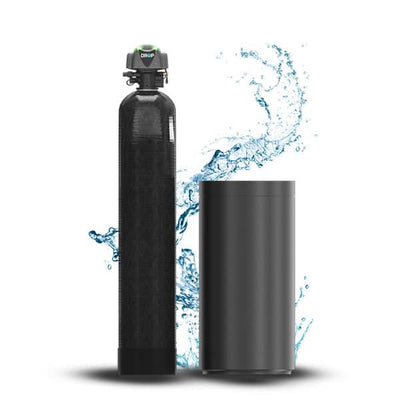 SoftPro Smart Home+ Water Softener with DROP Technology [WELL & CITY WATER]
SoftPro Smart Home+ Water Softener with DROP Technology [WELL & CITY WATER]
CHOOSE GRAIN CAPACITY 🔢 (use calculator)/CHOOSE PACKAGE 📦 (scroll down for package details)/WELL PUMP FLOW RATE (For Iron Filter)
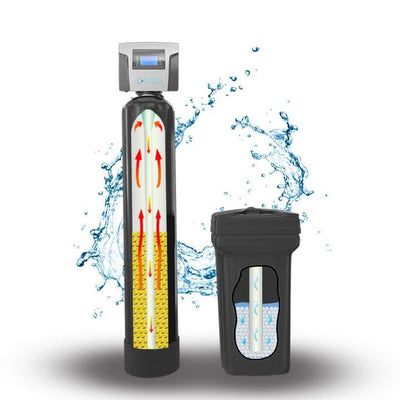 SoftPro® Elite HE Water Softener for City Water (Best Seller & Lifetime Warranty)
SoftPro® Elite HE Water Softener for City Water (Best Seller & Lifetime Warranty)
CHOOSE GRAIN CAPACITY 🔢 (use calculator)/CHOOSE FILTER PACKAGE
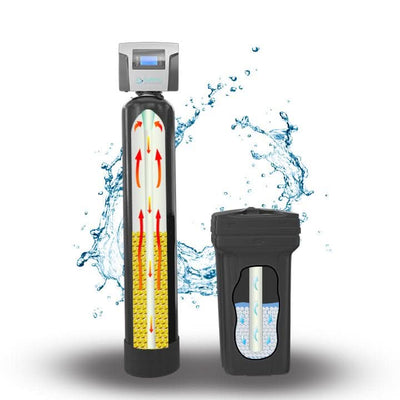 SoftPro® Elite HE Water Softener for Well Water (Best Seller & Lifetime Warranty)
SoftPro® Elite HE Water Softener for Well Water (Best Seller & Lifetime Warranty)
CHOOSE GRAIN CAPACITY 🔢 (use calculator)/CHOOSE PACKAGE 📦 (scroll down for package details)/WELL PUMP FLOW RATE (For Iron & pH Filters)
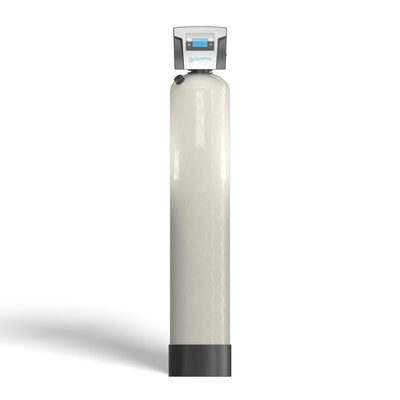 SoftPro® pH Neutralizer Calcite Filter for Neutralizing Acidic Water [WELL WATER]
SoftPro® pH Neutralizer Calcite Filter for Neutralizing Acidic Water [WELL WATER]
WELL PUMP SIZE BY FLOW RATE (GPM)
![SoftPro® Smart Home+ Water Softener & Whole House Carbon Filter with DROP Technology [CITY]-SoftPro® Water Systems](http://www.softprowatersystems.com/cdn/shop/files/DropSoftenerSpl_400x.jpg?v=1734470042) SoftPro® Smart Home+ Water Softener & Whole House Carbon Filter with DROP Technology [CITY]
SoftPro® Smart Home+ Water Softener & Whole House Carbon Filter with DROP Technology [CITY]
CHOOSE GRAIN CAPACITY
 SoftPro ECO™ City Water Softener - Best Water Softener Systems for City Water
SoftPro ECO™ City Water Softener - Best Water Softener Systems for City Water
CHOOSE GRAIN CAPACITY 🔢 (use calculator)/CHOOSE FILTER PACKAGE
 SoftPro ECO™ Well Water Softener (Top Seller & Lifetime Warranty)
SoftPro ECO™ Well Water Softener (Top Seller & Lifetime Warranty)
CHOOSE GRAIN CAPACITY 🔢 (use calculator)/CHOOSE FILTER PACKAGE/WELL PUMP FLOW RATE (For Iron Filter)
 SoftPro Smart Home+ Water Softener with DROP Technology [WELL & CITY WATER]
SoftPro Smart Home+ Water Softener with DROP Technology [WELL & CITY WATER]
CHOOSE GRAIN CAPACITY 🔢 (use calculator)/CHOOSE PACKAGE 📦 (scroll down for package details)/WELL PUMP FLOW RATE (For Iron Filter)
 SoftPro® Elite HE Water Softener for City Water (Best Seller & Lifetime Warranty)
SoftPro® Elite HE Water Softener for City Water (Best Seller & Lifetime Warranty)
CHOOSE GRAIN CAPACITY 🔢 (use calculator)/CHOOSE FILTER PACKAGE
 SoftPro® Elite HE Water Softener for Well Water (Best Seller & Lifetime Warranty)
SoftPro® Elite HE Water Softener for Well Water (Best Seller & Lifetime Warranty)
CHOOSE GRAIN CAPACITY 🔢 (use calculator)/CHOOSE PACKAGE 📦 (scroll down for package details)/WELL PUMP FLOW RATE (For Iron & pH Filters)
 SoftPro® pH Neutralizer Calcite Filter for Neutralizing Acidic Water [WELL WATER]
SoftPro® pH Neutralizer Calcite Filter for Neutralizing Acidic Water [WELL WATER]
WELL PUMP SIZE BY FLOW RATE (GPM)
![SoftPro® Smart Home+ Water Softener & Whole House Carbon Filter with DROP Technology [CITY]-SoftPro® Water Systems](http://www.softprowatersystems.com/cdn/shop/files/DropSoftenerSpl_400x.jpg?v=1734470042) SoftPro® Smart Home+ Water Softener & Whole House Carbon Filter with DROP Technology [CITY]
SoftPro® Smart Home+ Water Softener & Whole House Carbon Filter with DROP Technology [CITY]
CHOOSE GRAIN CAPACITY
 SoftPro ECO™ City Water Softener - Best Water Softener Systems for City Water
SoftPro ECO™ City Water Softener - Best Water Softener Systems for City Water
CHOOSE GRAIN CAPACITY 🔢 (use calculator)/CHOOSE FILTER PACKAGE
 SoftPro ECO™ Well Water Softener (Top Seller & Lifetime Warranty)
SoftPro ECO™ Well Water Softener (Top Seller & Lifetime Warranty)
CHOOSE GRAIN CAPACITY 🔢 (use calculator)/CHOOSE FILTER PACKAGE/WELL PUMP FLOW RATE (For Iron Filter)
 SoftPro Smart Home+ Water Softener with DROP Technology [WELL & CITY WATER]
SoftPro Smart Home+ Water Softener with DROP Technology [WELL & CITY WATER]
CHOOSE GRAIN CAPACITY 🔢 (use calculator)/CHOOSE PACKAGE 📦 (scroll down for package details)/WELL PUMP FLOW RATE (For Iron Filter)
 SoftPro® Elite HE Water Softener for City Water (Best Seller & Lifetime Warranty)
SoftPro® Elite HE Water Softener for City Water (Best Seller & Lifetime Warranty)
CHOOSE GRAIN CAPACITY 🔢 (use calculator)/CHOOSE FILTER PACKAGE
 SoftPro® Elite HE Water Softener for Well Water (Best Seller & Lifetime Warranty)
SoftPro® Elite HE Water Softener for Well Water (Best Seller & Lifetime Warranty)
CHOOSE GRAIN CAPACITY 🔢 (use calculator)/CHOOSE PACKAGE 📦 (scroll down for package details)/WELL PUMP FLOW RATE (For Iron & pH Filters)
 SoftPro® pH Neutralizer Calcite Filter for Neutralizing Acidic Water [WELL WATER]
SoftPro® pH Neutralizer Calcite Filter for Neutralizing Acidic Water [WELL WATER]
WELL PUMP SIZE BY FLOW RATE (GPM)
![SoftPro® Smart Home+ Water Softener & Whole House Carbon Filter with DROP Technology [CITY]-SoftPro® Water Systems](http://www.softprowatersystems.com/cdn/shop/files/DropSoftenerSpl_400x.jpg?v=1734470042) SoftPro® Smart Home+ Water Softener & Whole House Carbon Filter with DROP Technology [CITY]
SoftPro® Smart Home+ Water Softener & Whole House Carbon Filter with DROP Technology [CITY]
CHOOSE GRAIN CAPACITY
Remove Iron, manganese & sulfur! Well Water Filtration Has Never Been Easier!
See how... [click on video]
SOFTPRO IRON WATER FILTER
Filtration. Re-Invented.
- Next Generation High-Efficiency Design
- Air Injection Oxidation (AIO) Technology
- Remove Up To 30 PPM of Iron!
- Remove Manganese and Hydrogen Sulfide
- Raise pH to 7.0+
- Chemical-Free Operation
This state-of-the-art water filtration and purification system is chemical free.
It also pairs well with water softeners like the SoftPro ECO and SoftPro Elite water softeners for maximum water quality.
Return your water to how mature intended...

BEFORE YOU BUY A WELL WATER FILTER...
Find your well pump's flow rate. Easy...
Get Your Well Pump Flow RateQUICK LINKS
Looking for Something?
- How To Get Your Well Pump Size... Yes, it's important!
- What's Included
- Product Specs & Maintenance
- Install and Manual
THE PERFORMANCE ADVANTAGE
The SoftPro Elite Water Softener + AIO Iron Master Filter
SoftPro Elite Softener

SATISFACTION GUARANTEED!
6 Month Money Back... The SoftPro Advantage
IRON BE GONE
Massive Iron Content... No problem.
Pump iron at the gym... not thru your plumbing.
The Softpro AIO Iron Master Filter System will remove a massive amount of iron from your home's water, up to 30 PPM! (That's a lot!)
Reducing iron levels like no other products on the market can...
SoftPro Stands By Its Products
Lifetime Limited Warranty

We really like our products,
and are confident in the quality and build.
So why not offer a lifetime limited warranty?
*Obviously, this is subject to coverage and general conditions.
INDUSTRY LEADERSHIP
Certifications






KEY FEATURES

High-Performance Filtration
Reduce massive amounts of iron, manganese, and hydrogen sulfide.

Natural AIO Technology
The advanced Air Injection Oxidation (AIO) utilizes air as a natural oxidizer to boost iron removal.

Chemical-Free Operation
Only requires water for cleaning and operation.

Alkalizing, Healthy... No More Acidic Water
Restores healthy minerals and produces a balanced alkalinity in your water. No more acidic water.

Top of the Line Control Valve
The SoftPro Elite Water Softener System is a full-featured, high efficiency control valve. 1" ports maintains high flow rates.
HIGH-PERFORMANCE IN 2025
Why SoftPro Iron Master AIO Well Water Filter Crushes...
Up to
30 PPM
Iron Reduction
Up to
7 PPM
Manganese Reduction
Up to
5 PPM
Hydrogen Sulfide Reduction
Improve
pH 7.0+
Raise pH to 7.0+
(Neutralize acidic water)
Remove high level of Iron, Manganese, Hydrogen Sulfide (Sulfur)
- Chemical-Free Operation
- Low Maintenance
- This Water Filter system can tackle a wide range of water problems including iron, sediment, bad tastes, stains and odors as well as water clarity.


SoftPro Iron Master AIO Filter PROGRAMMABLE CONTROL VALVE
More Power At Its Core Makes It Best iron filter for well water


With the industry's most innovative design tech, SoftPro Elite Water Softener system is ready to take on even the hardest water.
So when you're powering through excessive mineral content water, SoftPro Elite Water Softener puts the control in your hands.

UPGRADED 1" PLUMBING PORTS
Ensure everything runs fluidly.
Higher peak water flow rates will power all of your appliances, tubs and showers.
Performance With Features
- 1" High-Efficiency High-Flow Rate Valve:
Use more water at a time without dropping the water pressure. - Large Valve Display: 4-Line Easy Read LCD
- Automatic settings
- Intuitive operation
- Electronic touchpad LCD show.
...No complex symbols or codes. - Self-charging battery capacitor
- Quick and simple installation

Ultimate Purification
- Remove Iron up to 30 PPM
- Remove Manganese up to 7 PPM
- Remove Hydrogen Sulfide/ Sulfur up to 5 PPM

Iron Content in your Well Water
What is this iron in my water?

Advanced Air Induction Oxidation Technology
How Does AIO TECH+ work?
This water filtration system works by supplementing oxygen to incoming water via a bubble of compressed air.
The oxygenated water then passes through a specialized filter bed.
As water passes through this AIO designed iron filter and the oxygen is depleted, the media attracts and filters out iron, sulfur and manganese.
Automatically, the system will then start the regeneration process to backwash out the iron trapped in the media bed and replenish the oxygen supply.

Flexible Applications
- Can be used in numerous water softeners for residential, commercial, industrial and municipal applications worldwide
- High level water filtration removes water color, odor, iron, manganese, hydrogen sulfide, zinc and/ or copper
Producing water quality untouched by competitors!
Well Pump Effective Flow Rates
Properly Size Your Well Water Treatment Systems
This video will go over how to size a well water filter system properly, it is easy to do yourself.
Warning! Before you purchase an iron filtration system for your well water, please STOP and watch this video.
It is very important that you size the water filter system for your needs and system setup.
Otherwise, it could be a costly and horrible experience.
Measure Your WELL PUMP FLOW RATE
Check your well pump's effective flow rate... Easy as 1, 2, 3...

Minimum Water Flow Rate Required:
The size of an iron filter or pH neutralizer system is dependent on the flow rate from your well pump.
Please check your flow rate to select the properly sized system.
Do not select a system that requires a higher flow rate.
SoftPro Well Filter Packages
Which Well filter Package is for you?
A Quality softener may not be enough... It depends on your water quality.
FREE WATER Analysis Report
Size Does Matter - Check Your Water & Options


- Get Your Free, Instant Water Report
- Custom Sizing Recommendations
- Get quality recommendations to match your specific needs
ANALYSIS REPORT

Katalox Technology With Advanced MnO2 Coating
- Highest concentration coating of MnO2 in the industry (10%) creates the most effective oxidation and co-precipitation of contaminants
- Far exceeds the performance of Birm, Greensand Plus, Manganese Greensand etc.


Note For Well Water Quality:
Proper softener operation and well water treatment may require additional water filtration systems.
Your well water quality will affect the performance and requirements for proper water treatment.
Iron Master AIO System Specs
| Model | Media Cu Ft |
Flow Rate USGPM | Mineral Tank Size |
Pipe Size Inches |
Ship Weight Lbs |
||
|---|---|---|---|---|---|---|---|
| Service | Peak |
Backwash |
|||||
| AIO 1.0 | 1.0 | 3 | 6 | 4 | 9 x 48 | 3/4” - 1” | 103 |
| AIO 1.5 | 1.5 | 4 | 10 | 5 | 10 x 54 | 3/4” - 1” | 127 |
| AIO 2.0 | 2 | 5 | 12 | 7 | 12 x 52 | 3/4” - 1” | 155 |



Certifications
- Drinking Water Application: ANSI/NSF 61
- Lead-Free Compliance: ANSI/NSF 372
- System Certification: NSF/ANSI 42-2017
- Fibreglass Pressure Tank and Control Valve Certifications: NSF/ANSI 44 (materials and structural integrity)
- Resin Certification: IAPMO R & T against NSF/ANSI 61 (material safety only)
SPECS, MAINTENANCE AND MORE [Well water]
The Details On Softeners & Filters
Well Water Treatment Systems
Safe Drinking Water Filters
MORE DETAILS
Frequently Asked Questions
✅ FINANCING OPTIONS
Get Quality Water Today!
Buy now, and pay over time.
We have several financing options to make your investment in soft, clean water for your home and family easy.
Multiple option plans...





















![Aldex Premium 10% Cross Link Resin for Water Softener [High Capacity]-SoftPro® Water Systems](http://www.softprowatersystems.com/cdn/shop/files/Aldex_10_Cross_Link_Resin_Premium_High_Capacity_for_Water_Softener_600x.jpg?v=1735853599)






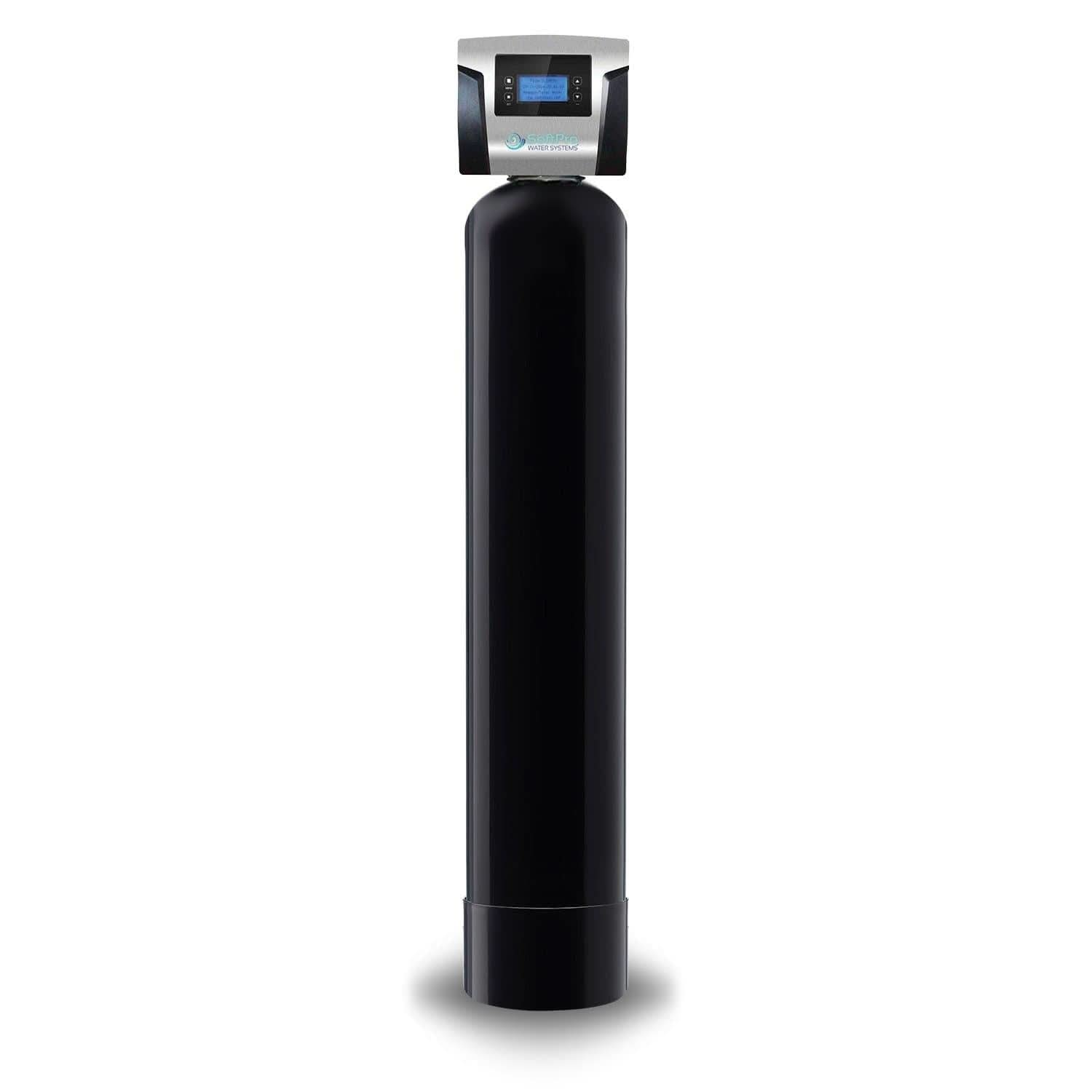
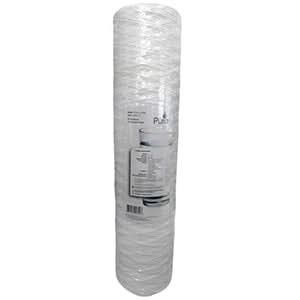
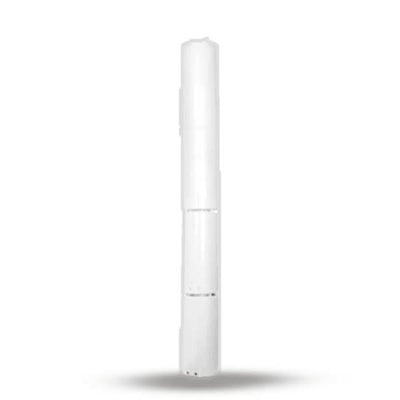
![Aldex Premium 10% Cross Link Resin for Water Softener [High Capacity]-SoftPro® Water Systems](http://www.softprowatersystems.com/cdn/shop/files/Aldex_10_Cross_Link_Resin_Premium_High_Capacity_for_Water_Softener_400x.jpg?v=1735853599)
